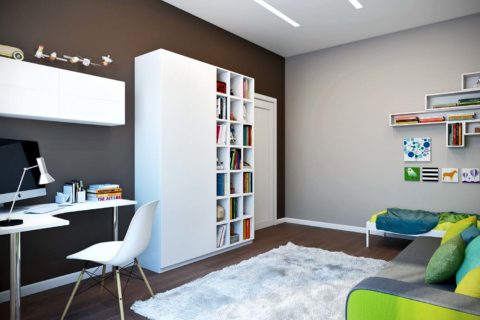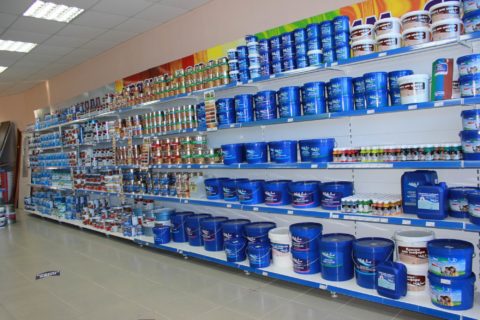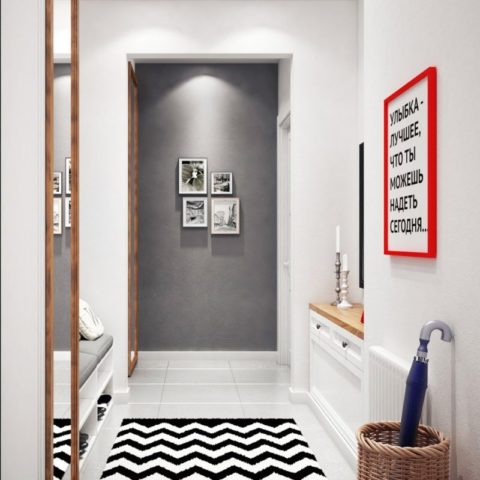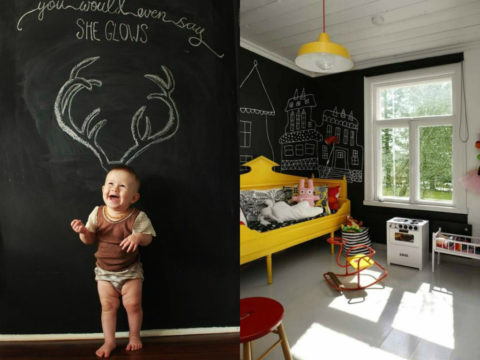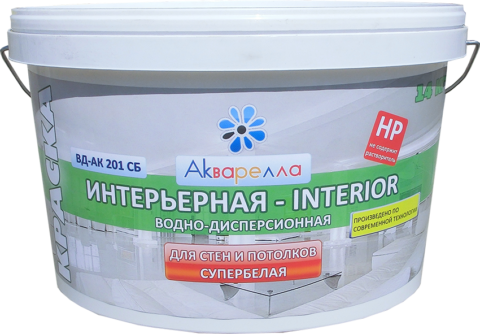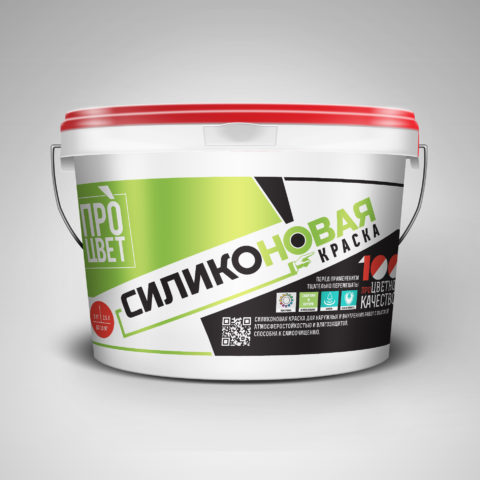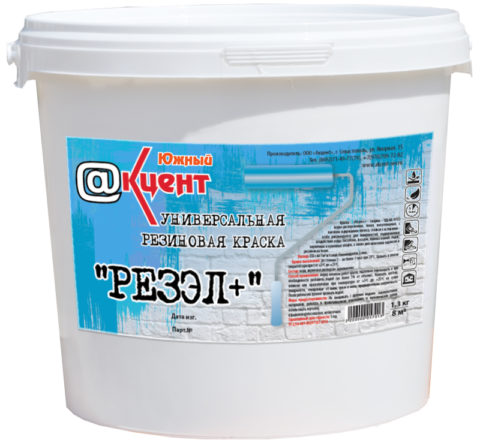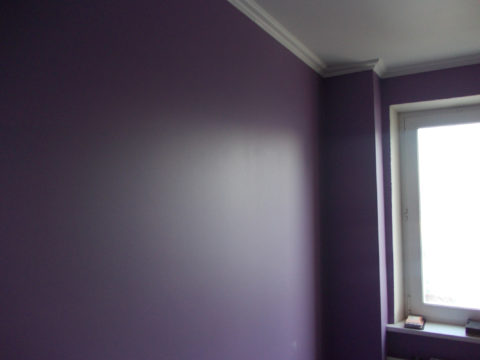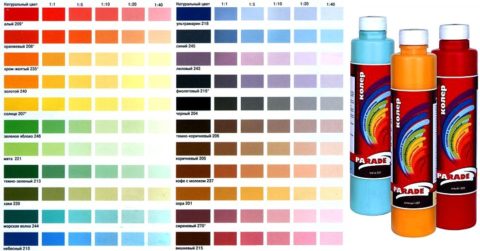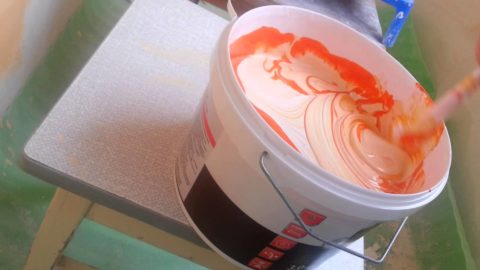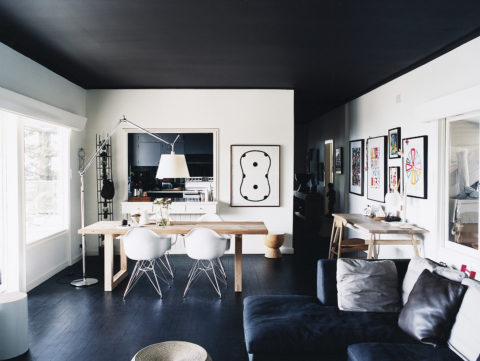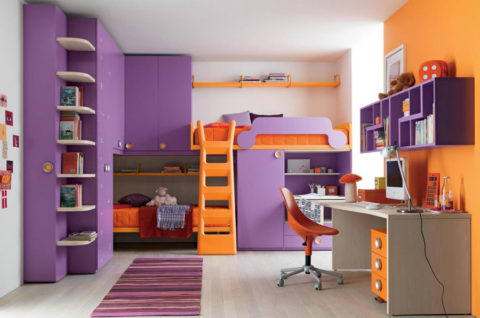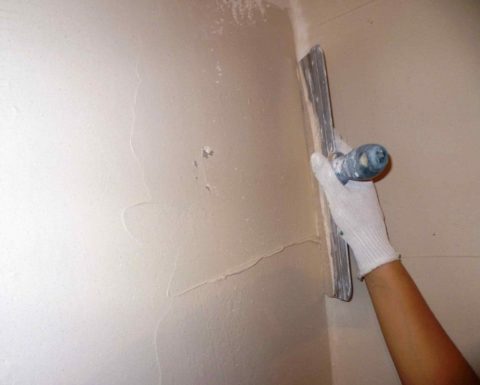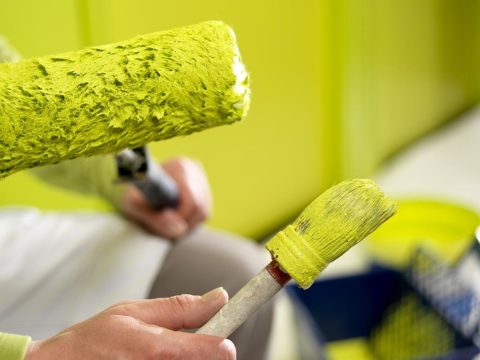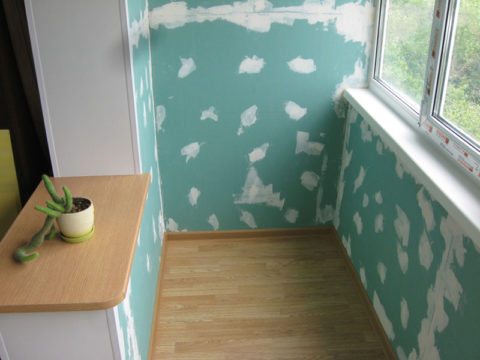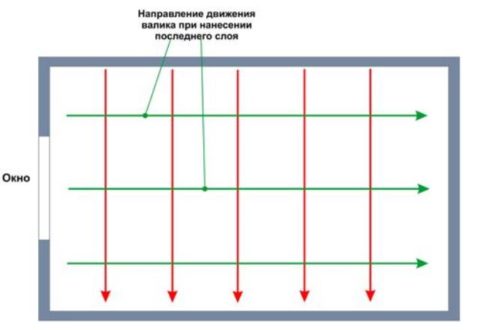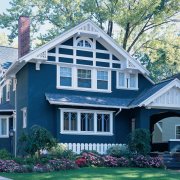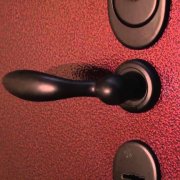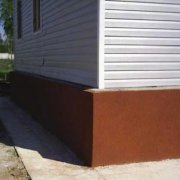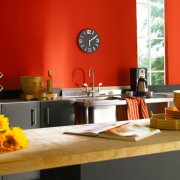What paint is better to paint the walls in the apartment, and how to do it right
Today we have to decide which paint is better to paint the walls in the apartment. We will get acquainted with the key properties of some of the dyes offered by the modern market, as well as find out how to properly prepare the surface for their application and how to apply paint to obtain the most uniform and high-quality coating.
The content of the article
Paint or wallpaper
What are the good painted walls in the apartment on the background of wallpaper? Cheap coverage. Quality paint costs less than equally high-quality wallpaper.
At a comparable cost, a lifetime. Wear-resistant washable paint will obviously last longer than paper wallpaper.
Easy repair in case of damage to the walls. Putting on a defect and tinting it is clearly easier than changing the affected strip of wallpaper (often combining the pattern with neighboring sections of the wall in agony).
Easy change of room design. To change the color of the walls, just primer them and paint them again. Shoot old wallpaper (which is not always done easily and quickly) is not necessary.
Dark side
Dilute the stream of enthusiasm and adoration for the paint with a spoon of tar.
Painting requires much more thorough preparation of the base. Embossed wallpaper can mask small (within 1-2 mm) wall defects, while the paint will leave them visible.
Captain Evidence suggests: an exception is structural paints that are applied without dilution and form a thick coating with artificial bumps.
Paint requirements
To decide how to paint the walls in the apartment, let's formulate our requirements for paint.
She must be:
- Resistant to dry abrasion. You will inevitably touch the walls with clothes, and it is advisable that neither the clothes nor the finish suffer;
- Odorless - both during operation and during application. For several days or weeks to breathe the vapor of an organic solvent - obviously no one will like it, and keeping the windows open around the clock does not always allow the weather and the noise level on the street;
- Quick drying. Waiting for a few days to gain full coverage in a small city apartment, to put it mildly, is inconvenient;
Practical effect: we paint the walls in the apartment with water-dispersion paint. It combines quick drying (1-2 hours “on stick” with full polymerization during the day) with no odor.
- In humid rooms (bath, toilet, kitchen), and where the walls will be exposed to intense pollution (entrance hall, children's room), the coating should be washable. Spray is an inevitable attribute of the bathroom and kitchen, and children's love of active games leaves no chance for the coating to stay clean;
- Finally, a reasonable bonus for the buyer will be a reasonable price per kilogram of dye. It is advisable that for the sake of repair the homeowner does not have to incur prohibitively high costs.
You point a finger
So, what paint is painted on the walls in the apartment with all the requirements?
In order not to list all the possible options, we just point out some of the most reasonable solutions:
| Picture | Description |
| Acrylic water emulsion. Combines high resistance to dry wear, with moderate resistance to wet abrasion. It can not be called a full washable coating, however, minor contaminants are removed from the painted surface without harming it, and clothing does not get dirty when it touches the walls. | |
| Silicone water-dispersion paint. Washable, i.e. suitable for bathrooms, toilets and nurseries. Manufacturers guarantee that it can withstand up to 5000 wet cleaning cycles. | |
| Acrylic latex rubber is another washable coating that also provides reliable waterproofing to the base. The author successfully used it to finish drywall walls in the bathroom. The coating reliably protected the gypsum board and gypsum putty from contact with water. |
Note: a dye with a glossy texture is more demanding on the quality of the surface, since it emphasizes the slightest defects with shadows. Matte paint, by contrast, is able to hide small irregularities in the walls.
To learn more about how and how to paint the walls in the apartment, the video in this article will help you.
Tinting
The better to paint the walls in the apartment - we figured it out. Now we are faced with the problem of choosing a color (see How to choose a paint color for walls).
Let's make a small digression. Emulsions are sold in white. To obtain the desired color, they are tinted by mixing with one or more water-soluble pigments.
To obtain a given hue, there is a computer tinting. However, it costs money, and considerable. With manual mixing, you will never get the same shade twice.
Practical implications:
- If this does not contradict the design concept, use white paint without tinting. In the future, you will have much less problems with wall repairs: any defect can be eliminated with acrylic putty and, if necessary, tinted with dye directly from the factory packaging, without wasting time on color matching;
- If you still decide to tint the paint - mix with the pigment its entire volume, and not each can individually;
- Be sure to leave a supply of tinted dye in the desired color for future repair of inevitable damage.
Now a few words about the choice of color. Of course, we cannot decide for the reader what color to paint the walls in the apartment. But, we can introduce him to several general principles of the color design of the premises.
- Light colors visually increase the volume of the room, dark - reduce;
- The combination of white walls and black flow will make the room look wide and low. The combination of dark walls and a white ceiling will make her seem taller;
By the way: the same effect can be achieved by selective illumination of surfaces painted in the same colors. Brightly lit walls or ceilings seem farther than those drowning in the dark.
- In the bedroom, colors that promote relaxation are appropriate - shades of blue and green. Beige, yellow and orange are ideal for a drawing room, brown and gray - for an office;
- In one room you should not combine more than three primary colors - it will look unpleasantly variegated. Different shades of the same color, black, white colors and mirror surfaces do not count.
Practical lessons
Now let's move on from theory to practice, and find out how to paint the walls in an apartment using water-dispersion paint.
Wall preparation
The wall for painting should be durable, clean and with moderate absorbency - otherwise the paint simply will not lie on it. Therefore, to begin with, remove all fragile and low-adhesive coatings from the wall surface (see How to clean the wall of plaster) How to do it?
Here is an instruction for a few typical cases:
- Cretaceous whitewashing can be washed off with plenty of water;
- Lime is removed with a spatula after plentiful moistening (twice with an interval of 10-15 minutes);
- An old water emulsion can often be removed with the same spatula, after wetting the surface with hot (75-80 degrees) water or penetrating acrylic soil;
- Alkyd, oil and nitro enamels are removed with a spatula after applying a universal wash. Alternatively, the paint can be heated with a construction hairdryer or blowtorch - after softening, it can also easily be removed from the base.
The next step is the elimination of surface defects. Small defects are sealed with acrylic putty after priming with penetrating primer, large ones with gypsum or cement putty (or plaster followed by puttying).
In the most advanced cases, the walls are plopped over the entire surface. In dry rooms, gypsum-based mixtures are used for this; in wet rooms, cement-based mixtures are used.
After complete drying of the repaired areas, the walls are sanded, dusted and primed over the entire surface with acrylic penetrating primer. He will stick the remaining dust, make the surface of the walls more durable and reduce paint consumption by filling the pores of the base.
Painting
Painting walls in an apartment requires the simplest tool:
- Roller with medium pile;
- Paint tray;
- Brushes for painting inside corners.
By the beginning of work, the paint must have a viscosity of very fat milk. If it thickens, dilute it with water and mix thoroughly throughout. Excessive viscosity will increase consumption, make drying of each layer longer, and will most likely result in drips on a flat surface.
Attention: the walls are painted at a temperature of +5 to +30 degrees. In cold weather, the paint thickens or even freezes on the walls, and in extreme heat dries before you evenly distribute it on the painted surface.
How to paint the walls in the apartment with water-based paint?
Here are a few simple rules that will help you do this job yourself with the highest quality:
- If you are painting drywall, start painting at least two weeks after filling the joints (see How is plasterboard joints puttying performed) Otherwise, they will be highlighted through any number of layers of paint;
- When applying each layer, first paint over the inner corners with a brush, then go to the planes of the walls with a surface painting with a roller;
- Dip into paint and roll out the roller only in the paint tray. Rolling on the wall will give an uneven coating thickness;
- Do not take breaks when painting one wall: the paint will have time to dry, and at the border of the previously painted area there will be a noticeable thickening of the coating;
- Apply each new layer perpendicular to the previous one. So you hide the inevitable strips from the roller;
- A new layer is applied after the old is completely dried. Drying takes from 30 minutes to two hours, depending on the level of humidity and room temperature;
- If you notice flaws when the paint has already begun to dry, do not tint the wall. Wait for the surface to dry and apply another layer;
By the way: manufacturers recommend applying a water emulsion with at least two layers. According to the experience of the author, the color of the surface becomes uniform only after applying the fourth layer.
- The last layer is preferably applied parallel to the rays of the prevailing lighting (from a window or from fixtures). In this case, the stripes will be the least noticeable.
Conclusion
We hope that our material will help the reader to choose high-quality paint and apply it correctly. To learn more about how and how to paint the walls in the apartment, the video in this article will help you. Good luck!
